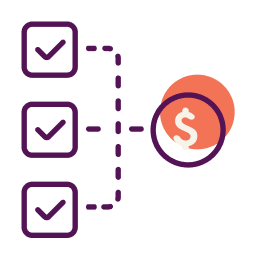Ready for a challenge? Of course you are — you’re a business owner after all. How about a challenge to establish and build business credit in less than two weeks? If you’re like many of the entrepreneurs we work with at Nav, building credit for your business is a task that’s been on your “to do” list for a while, but you’ve relegated it to the back burner more than once, and it’s simply not getting done.
We’re going to make it easy for you by giving you 11 tasks to accomplish in 11 days. (Or you can space them out and cover them in 22 days — just don’t let them get put on the back burner again!)
While you aren’t going to go from no business credit score to a stellar credit rating in less than two weeks, once you’ve checked these items off your list, you should be well on your way to building a positive business credit history.
Before we delve into the steps, let’s answer what is likely your most pressing questions:
How Fast Can a Business Build Credit?
Many business owners have made significant progress building their business credit using the steps described below. It’s impossible to predict exact results since many different factors go into building business credit, but it’s not unusual to see positive results in just a few months.
Keep in mind it may take 30 to 60 days for new accounts to appear on business credit reports, so the sooner you start, the better!
Here are the eleven steps in our challenge:
1. Make Sure Your Business Is Set Up Correctly
Making sure your business is set up properly is the most involved of the steps we’ll describe, but it’s important for a variety of reasons. To build business credit, you need a business. While that may sound obvious, the vast majority of small businesses in the US operate as sole proprietors and many haven’t taken even basic steps to make sure their business looks (and is) legitimate in the eyes of lenders, suppliers and business partners.
Make your business official
If possible, establish a separate business entity (Limited Liability Company — LLC — or S corp, for example). You can build business credit as a sole proprietor but when you operate your business that way you have no legal protection and some lenders recognize that. Plus, there may be significant tax advantages to setting up a legal entity.
Make sure you have a business name that doesn’t infringe on others, or will get mixed up with others— including in credit reports. Also be sure you’ve decided on your business address (even if it’s your home address) and get a business phone number separate from your personal phone number. (Here are some inexpensive business phone number options.)
File the proper paperwork
If your business needs a business license, get it. If you operate under a fictitious name (“doing business” as or “DBA”), be sure to file a fictitious name registration with your state. These steps are important for ensuring your business is on the record with your state. Some business credit reporting agencies may access that information.
You may have taken some of these steps already, but if not, now’s the time to knock these out. Use this 15-step checklist to make sure you haven’t overlooked basic steps for making sure your business is legitimate.
2. Check Your Credit
Good credit helps individuals and businesses qualify for financing at lower interest rates, and often means higher credit limits as well. Lenders care about creditworthiness, and so should you.
Review business credit
Even if you haven’t done a thing to build business credit, your business may already be in the databases of commercial credit agencies. This is particularly true if you have formed a corporate structure or registered your business with your state; that information often makes its way to credit reporting agencies and starts your credit file.
You can check if you are in Experian’s database here; Dun & Bradstreet here (click on company search); and Equifax here. But a much simpler way to check is with Nav, where you can find out whether your business has a credit report with all three agencies at once.
Review personal credit
Some small business lenders and financing companies will also check your personal credit history. It’s essential that you know what they may see by checking your own credit reports. By law, you can get free personal credit reports once a year at AnnualCreditReport.com. But that won’t provide you with credit scores, though there are more than 138 places to get your credit scores for free.
Again, Nav is the only place to provide access to 6 detailed business and personal credit reports.
Check for errors to correct
When you check your credit reports — business or personal — make sure the information is accurate. Errors can affect your credit scores and make it more difficult to qualify for small business loans or other types of financing.
3. Get a D-U-N-S® Number
Dun & Bradstreet is one of the major business credit bureaus. A D-U-N-S® Number is an identifier for your business in the Dun & Bradstreet database.
Apply through Dun & Bradstreet
If your business does not already have one (your business did not show up in step 2 when you checked D&B’s database), you can get a D-U-N-S Number for free. You do not have to register in advance with Experian or Equifax.
Essential for building business credit
Although getting a D-U-N-S Number may seem like a small step, it is one you won’t want to overlook. You may be asked for this number when you fill out credit applications. Including the correct information can help ensure you get credit for the accounts you establish.
4. Check or Choose Your NAICS or SIC Code
Industry codes may help your business qualify (or disqualify) for certain types of loans, including SBA loans and traditional financing.
Select the right industry classification code
An SIC or NAICS code is a code used to identify the type of business you operate. If your business already has a business credit file, make sure the SIC or NAICS code listed describes your business correctly.
Helps lenders assess your business
It is important that your industry code is accurate. Some types of businesses are considered higher risk and some lenders won’t lend to businesses in certain industry categories.
5. Open a Business Bank Account
Get an account under your business name
This step won’t directly impact your business credit in the short term, as business bank accounts do not typically appear on credit reports. However, it can help you qualify for financing options, which in turn can help build your business’s credit.
A business bank account may help you qualify for business loans, lines of credit, or other types of financing in the future. It’s not uncommon for lenders to require small business owners to submit recent business bank account statements so they can verify business income and review the businesses’ cash flow. If you then secure financing, that account may appear on your business credit reports and help build credit.
Avoid commingling personal and business funds
When you get a business checking account, avoid using it for personal use. If you need to take money from your business, pay yourself either through formal payroll or owner’s draw then use those funds to pay personal expenses. (Talk to your accountant for the best approach.) Paying business expenses through personal accounts, or commingling business and personal finances can make tax time much more complicated.
6. Get a Business Credit Card
Choose a business credit card
A business credit card will allow you to separate business and personal purchases, but more importantly, should give you a positive business credit reference if paid on time. This guide explains how major credit card issuers report to commercial credit agencies.
Fortunately, you may be able to get a business card even if your business is a startup. These applications are usually evaluated on the basis of the owner’s personal credit scores, not the credit score of the business. Most cards require good personal credit scores and sufficient income (from all sources, including personal income).
Use it responsibly and pay on time
Once you get approved, be sure to pay on time and charge only as much as you can afford to pay back on time. Missed payments or high debt can hurt your business credit scores. Pay at least the minimum payment each month, and try to pay more to keep debt levels down.
Automate payments to avoid missed payments
Pay your business credit card on time to help build good business credit. Paying bills on time is crucial to building good credit and it’s even more important with business credit since some business credit scores are based almost entirely on payment history. Don’t let a bill slip through the cracks and hurt your credit.
Set up automatic payments for your account, even if it’s just to make sure the minimum payment gets paid on time each month.
7. Apply for Net-30 Accounts
Vendors are companies that offer supplies your company needs, such as shipping boxes, cleaning supplies, printer ink, etc. These are also called business tradelines. Some vendors offer net-30 terms to business customers, which means the bill must be paid within 30 days of the invoice date. If you establish an account on terms with a vendor that reports that payment history to commercial credit bureaus, you’ll help build your business credit — provided you pay on time of course!
Using Nav Prime gets you on your way. The bundle gives you up to two actively reporting tradelines sent to the major business credit bureaus.
Check with a supplier your business uses regularly
If you already purchase regularly from suppliers, ask whether they offer credit terms. This can be a good way to get started. Be sure to also ask if they report to business credit agencies on a regular basis.
Note: If your business is brand new and you don’t have a business credit history, some vendors may require you to purchase and pay for an order (or several orders) in full before they will extend payment terms.
Make on-time payments
We’ll say it several times: paying on time is essential for building business credit. Paying on time is the top thing you can do to build business credit.
8. Get A Second Vendor Account
Now that you have one account under your belt, you’ll want to establish a second one (this might already be taken care of if you use Nav Prime!). Applying for numerous accounts in a short period of time can backfire on you if the lender is relying on personal credit. That’s because personal credit reports list an “inquiry” every time your personal credit is checked, and each one can lower your credit scores by a few points. But business credit inquiries are not as much of a concern; typically they don’t even matter.
Continue building payment history
You’re going to need a few accounts to establish business credit, so it often makes sense to get another one. Again you can talk to suppliers you work with, or you can find vendors that report here.
9. Open an Account With Nav
You’ll need three accounts reporting to Dun & Bradstreet for a D&B PAYDEX® score to be created. A Nav Prime account submits a tradeline monthly to major business credit bureaus. Plus, you’ll be able to monitor your credit reports and scores, and track your progress.
10. Schedule Payments on All Accounts
As we mentioned earlier (several times), the most important thing you can do to build strong business credit is to pay all of your business accounts that report on time. (Early can be even better.) But with so much to do in your business, it’s easy to get busy and miss due dates.
Automate payments to vendors
It may be harder to automate vendor accounts as compared to credit card accounts, but if the supplier doesn’t offer automated payments, you can often set up online payments from your business bank account.
Ensure on-time payment history
At a minimum, put a reminder on your calendar to make sure the payment is made on time. If you pay by mail, allow at least seven days to ensure it is received before the due date. Business credit reports will note if a payment is even a day or two late.
11. Monitor Your Business Credit
If you’ve made it this far, the next step is to monitor your progress and continue to work on your business financial health. You’ll now want to monitor your progress and continue to work on your business financial health. This is an ongoing process that will continue as your business grows.
Check reports regularly
It may be a couple of months before your new business credit card and vendor accounts show up on your business credit reports, so start monitoring your reports on a monthly basis to see when they appear. If they don’t show up in sixty days or so, contact those lenders and/or vendors to see if you can find out why they aren’t reporting.
Dispute any errors quickly
Using Nav Prime to manage your full credit reports allows you to see any mistakes right away and dispute them. This helps stop issues on your reports from affecting your credit scores.
Step 12: Review and Adjust Your Strategy Regularly
Building business credit isn’t a one-time task—it’s an ongoing process. As your business grows, your credit needs and opportunities will change. Regularly reviewing your credit reports and financial strategy helps you stay on track and maximize your funding potential.
Adjust your strategy as needed
- Expand your credit mix by adding a business credit card or a new vendor account.
- Leverage strong credit to apply for higher credit limits or better loan terms.
- Improve cash flow by optimizing your payment schedule and credit usage.
Stay proactive with Nav Prime
Nav Prime provides detailed business and personal credit insights, tradeline reporting, and customized credit-building tools.
Next step: Not sure where you stand? Check your business credit now with Nav.
Typical Time Frame for Building Business Credit
Building business credit is not an overnight process, but with the right steps, you can continue to see progress. Your timeline will vary based on factors like account reporting cycles, payment history, and the types of credit used.
Short-Term (0-3 Months)
- Set up business properly and open a business bank account.
- Apply for a D-U-N-S® Number.
- Open net-30 vendor accounts that report to business credit bureaus.
- Use a business credit card and make on-time payments.
- Get Nav Prime to check and monitor credit and add a tradeline.
Mid-Term (3-6 Months)
- Continue using vendor accounts and pay on time.
- Apply for additional credit lines as needed.
- Ensure all payments are made on time to build a strong credit history.
- Monitor your business credit reports for updates and dispute any errors.
- Consider Nav Prime to track your progress and receive personalized credit-building recommendations.
Long-Term (6-12 Months and Beyond)
- Expand your credit mix with a small business loan, if appropriate.
- Negotiate higher credit limits based on your business’s financial health.
- Keep personal and business finances separate to strengthen business credit.
- Maintain a consistent credit review schedule to stay on top of your financial profile.
While some lenders require two years of business history for certain types of financing, strong business credit can open doors much sooner. Many business owners see significant improvements within six months by following a structured plan.
Business Credit Cards as a Credit-Building Tool
A business credit card can be one of the fastest and most effective ways to build business credit. Credit cards help separate business and personal expenses, and, when paid on time, can strengthen your credit profile.
How business credit cards help build credit
- Reports to business credit bureaus: Many business credit cards report payment activity to major business credit bureaus, helping establish a strong credit history.
- Builds a positive payment record: Making on-time payments consistently improves business credit scores.
- Provides access to flexible financing: A credit card can help cover short-term expenses while managing cash flow.
Choosing the right business credit card
When selecting a business credit card, consider:
- Whether it reports to business credit bureaus (not all do).
- The required credit score or business history for approval.
- Interest rates, fees, and credit limits.
- Perks, rewards, or cash back on business expenses.
Best practices for using a business credit card
- Pay the balance on time and in full whenever possible.
- Keep credit utilization below 30% of the limit to maintain strong credit scores.
- Avoid using the card for personal expenses to keep finances separate.
- Set up automatic payments to prevent missed due dates.
If you don’t have good credit, you may want to check into a business charge card or secured business credit card.
Tools To Help You Check and Monitor Your Business Credit
Business credit monitoring services can help you check, monitor and manage your business credit. These include:
| Service + | Highlights of Service Offered | Cost |
| Bank of America | Free credit scores: The D&B® Delinquency Predictor Score and The D&B® Small Business Financial Exchange (SBFE) Score, based on data from Dun & Bradstreet. | Included with Bank of America’s Business Advantage 360 |
| D&B Credit Insights | 24/7 access to view five D&B business credit scores & ratings including D&B Paydex Score and the D&B Rating and detailed legal events: lawsuits, liens, judgments, UCC filings. | $49/month or $499 annually; free plan also offered |
| Experian Business Credit AdvantageSM | Unlimited access to an online copy of Experian business credit report and Experian credit ranking score; tracking of changes, three-month trend information, and email alerts. | $189 annually |
| Nav | Summary reports and credit grades from Equifax and Experian (business credit) and summary report and score from Experian (personal credit)* | Free |
| Nav Prime | Business credit reports and scores from Equifax® and Experian™, updated monthly. Personal credit reports and scores from Experian™ and TransUnion® updated monthly..** Tradeline reporting; Nav submits monthly payments as a tradeline to major business credit reporting agencies. | $49/month; |
Biggest Misconceptions About Building Business Credit
Here are a few of the most common misconceptions about building business credit.
1. It’s complicated
Establishing business credit does take a little time but the steps above are straightforward. Many of them are steps that will help create a solid business foundation, which means your business can benefit beyond building credit.
2. You need debt to build credit
With business credit, you don’t need to take on debt to build credit. You can use trade credit accounts and business credit cards, for example, then pay your balance in full. An on-time repayment history with low credit utilization will help you build excellent credit. When the time comes to borrow money for your business, strong business credit may help you qualify for better terms.
3. You need good personal credit to build business credit
Many of the resources listed here, including many net-30 accounts and Nav Prime, don’t require good personal credit to qualify. And even some business credit cards and charge cards are available to those with limited credit or even bad credit.
Frequently Asked Questions About Building Business Credit Fast
What is the quickest way to get business credit?
If you are looking for a quick way to build business credit as well as borrow in the name of your business, then supplier or vendor accounts are one of the fastest ways to get started. Business credit cards are also a fast way to establish business credit and get short-term financing for your business. (Most business credit cards require a personal guarantee but don’t appear on personal credit reports as long as you make the payments as agreed.)
Nav tradeline reporting is another way your business may establish credit quickly. Nav customers with positive business credit score changes averaged a 42 point increase* across business credit bureaus within the first 3 months of using Nav tradeline reporting.
How to build credit with EIN number
Some vendors and suppliers, as well as some types of business financing, do not require a personal credit check. An employer identification number (EIN) may be used instead of a social security number. In that case, the small business owner may be able to obtain credit based solely on business qualifications and a business credit profile. However, lenders still need to try to ensure that they will be repaid. Typically that means they will want to see strong revenues and/or at least two years in business.
How can I build business credit in 2 weeks?
While you aren’t going to build a strong credit score in just two weeks, you can lay the essential groundwork. Register your business properly, get an EIN and D-U-N-S Number, open a business bank account, and apply for your first credit accounts within this timeframe. Focus on quick-approval options like Nav Prime and vendor accounts that don’t require extensive credit history. Most importantly, set up autopay to ensure consistent on-time payments once your accounts are established.
How soon can you build business credit?
Most businesses can establish initial business credit scores within 3-6 months of getting their first reporting accounts. However, building strong scores may take 6-12 months of consistent on-time payments. Credit reporting agencies need several months of payment history to generate credit scores. Early positive payment history is crucial – even a single late payment in these first months can impact your scores.
How can I build credit in a newly started LLC?
Start by establishing your LLC’s business identity – get your tax id number from the IRS, D-U-N-S Number, and business bank account. Then focus on securing accounts that report to business credit bureaus. Consider Nav Prime for monthly tradeline reporting, as well as net-30 vendor accounts that don’t require an extensive credit history. Once these are established, apply for a business credit card using your personal credit if needed. Maintain separate business finances and set up autopay to ensure on-time payment history from day one.
What’s the fastest way to build business credit?
The fastest path to building business credit is to get accounts that report to business credit bureaus and pay them on time.
Nav Prime allows you to monitor your business credit, and submits a tradeline monthly to major credit bureaus. Most small business credit card report to commercial credit agencies. And net-30 vendor accounts with suppliers who report payments can also add a credit reference. Focus on getting 3-4 total accounts reporting, as this helps establish a credit profile more quickly.
*Nav offers both a free and a paid plan with a Nav Prime membership. The free plan provides basic credit monitoring and reports, while the Nav Prime membership offers more comprehensive monitoring, detailed reports, and enhanced insights.
**Nav Prime provides access to Experian™ Intelliscore PlusSM V2, Equifax® Business Delinquency Score®, TransUnion®VantageScore® 3.0, and Experian™ VantageScore® 3.0. VantageScore is a registered trademark of VantageScore, LLC.
This article was originally written on January 17, 2018 and updated on February 25, 2025.








Have at it! We'd love to hear from you and encourage a lively discussion among our users. Please help us keep our site clean and protect yourself. Refrain from posting overtly promotional content, and avoid disclosing personal information such as bank account or phone numbers.
Reviews Disclosure: The responses below are not provided or commissioned by the credit card, financing and service companies that appear on this site. Responses have not been reviewed, approved or otherwise endorsed by the credit card, financing and service companies and it is not their responsibility to ensure all posts and/or questions are answered.